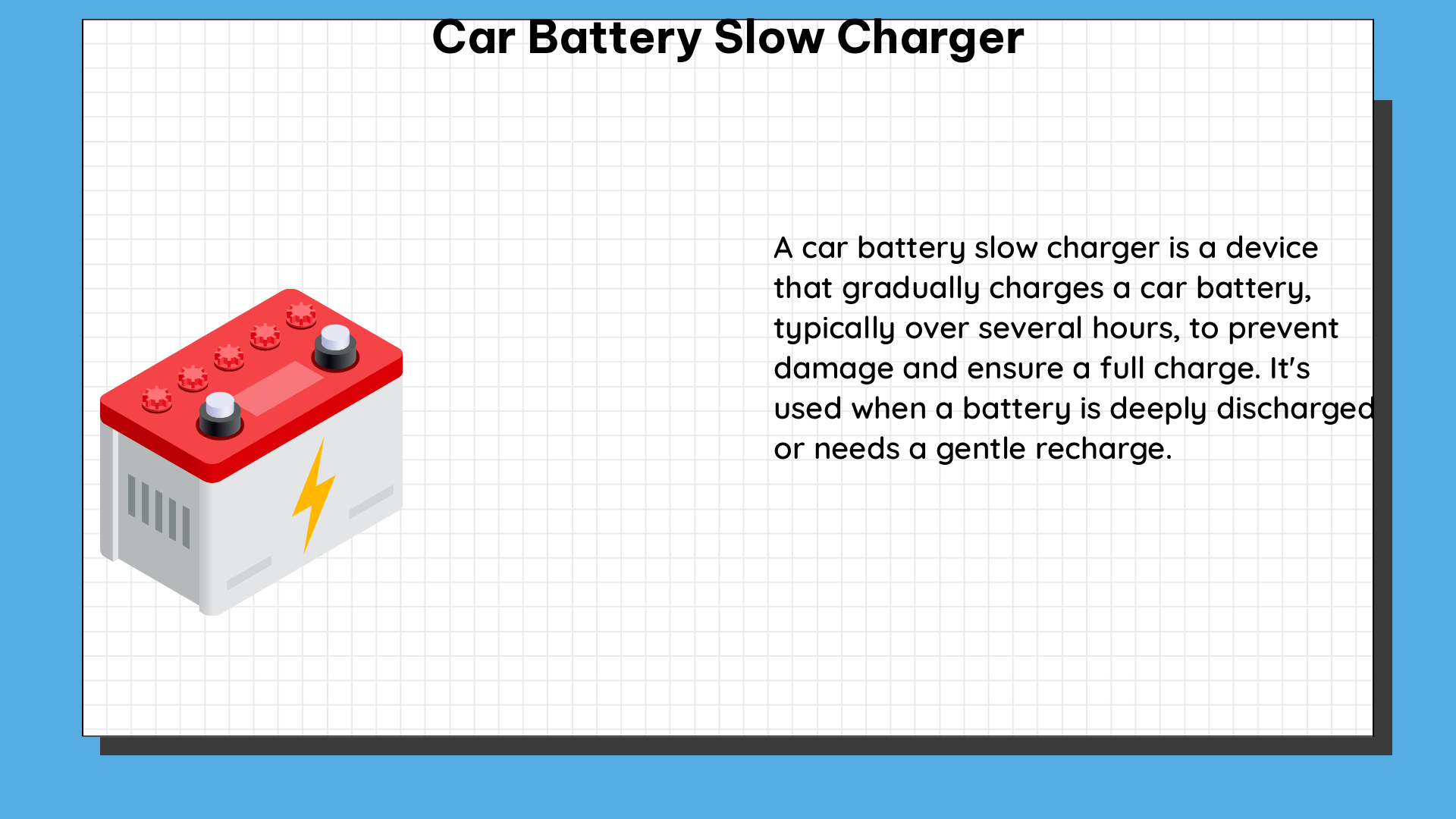A car battery slow charger, also known as a trickle charger, is a device used to maintain the charge of a 12-volt car battery. It provides a constant “trickle” charge to the battery, even when it is fully charged, to prevent self-discharge. The technical specifications of a car battery slow charger include an output voltage of 13.2 volts, which is the ideal voltage for charging a 12-volt car battery. However, a battery won’t charge at 13.2 volts due to internal resistance, and a small difference in potential will not result in much current flow.
Understanding the Technical Specifications of a Car Battery Slow Charger
Output Voltage
- The output voltage of a car battery slow charger is typically 13.2 volts, which is the ideal voltage for charging a 12-volt car battery.
- However, due to the internal resistance of the battery, the battery will not charge at 13.2 volts. Instead, the voltage will drop slightly, and the current flow will be limited.
- The actual charging voltage will depend on the state of charge of the battery and the internal resistance of the battery.
Output Current
- The output current of a car battery slow charger is typically in the range of 1-2 amps.
- This low current is designed to slowly and gently charge the battery, rather than quickly charging it.
- The slow charging rate helps to prevent overheating and damage to the battery.
Charging Time
- The charging time for a car battery slow charger can vary depending on the size of the battery and the state of charge.
- For a fully discharged 12-volt car battery, it can take up to 24 hours or more to fully charge the battery using a slow charger.
- It’s important to note that the charging time can be affected by factors such as the ambient temperature and the condition of the battery.
Battery Capacity
- Car batteries typically have a capacity of 40-80 Ah (Amp-hours).
- The capacity of the battery will determine how much charge it can hold and how long it will take to charge using a slow charger.
- Larger capacity batteries will take longer to charge using a slow charger.
Charging Stages
- Car battery slow chargers typically use a multi-stage charging process to ensure the battery is charged safely and efficiently.
- The first stage is the bulk charge, where the charger delivers a constant current to the battery until it reaches a certain voltage.
- The second stage is the absorption charge, where the charger maintains a constant voltage to the battery to fully charge it.
- The final stage is the float charge, where the charger maintains a lower voltage to keep the battery fully charged without overcharging it.
Safety Considerations When Using a Car Battery Slow Charger

Hydrogen Gas Buildup
- During the charging process, hydrogen gas can build up around the battery, which can be highly explosive.
- It’s important to ensure the charging area is well-ventilated and to lift the battery corner every 30 minutes to release the hydrogen and oxygen bubbles.
Negative Cable Attachment
- When connecting the charger to the battery, it’s important to attach the negative cable to the frame or block instead of the negative terminal.
- This helps to prevent sparks and explosions that can occur if the negative cable is connected directly to the battery terminal.
Charger Output Stability
- The output of a car battery slow charger should be stable and consistent.
- If the charger shows pulses or fluctuations in the output voltage, it may indicate a problem with the charger and should be tested with a multimeter.
Battery Condition
- If the battery reads 2.7 VDC after 24 hours of charging, it may be damaged or faulty, and the charger may not be functioning correctly.
- It’s important to monitor the battery’s condition during the charging process and replace the battery if necessary.
Conclusion
Car battery slow chargers, or trickle chargers, are an essential tool for maintaining the charge of a 12-volt car battery. By understanding the technical specifications and safety considerations, you can ensure that your car battery is charged safely and efficiently. Remember to follow the recommended safety measures, monitor the charging process, and replace the battery if necessary to keep your vehicle running smoothly.
References:
– How often to trickle charge car batteries? – Subaru Outback Forums
– Can a battery be on a trickle charger too long? – FerrariChat
– Should negative trickle charger clips be attached to the battery negative terminal – Mechanics Stack Exchange
– Using trickle charger to save memory when changing modern car battery – Reddit
– What should the output of a trickle charger be? – The Garage Journal

The lambdageeks.com Core SME Team is a group of experienced subject matter experts from diverse scientific and technical fields including Physics, Chemistry, Technology,Electronics & Electrical Engineering, Automotive, Mechanical Engineering. Our team collaborates to create high-quality, well-researched articles on a wide range of science and technology topics for the lambdageeks.com website.
All Our Senior SME are having more than 7 Years of experience in the respective fields . They are either Working Industry Professionals or assocaited With different Universities. Refer Our Authors Page to get to know About our Core SMEs.